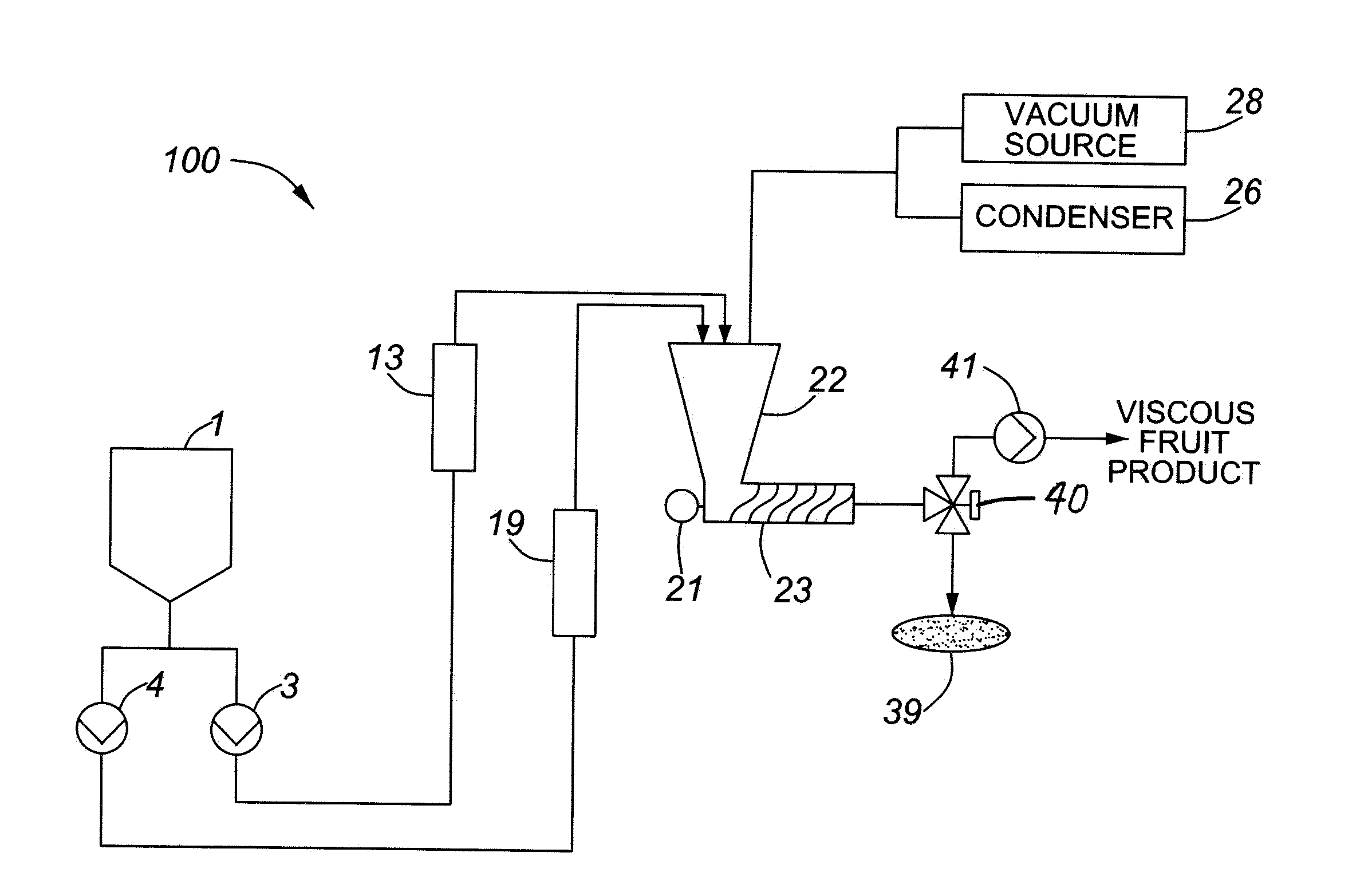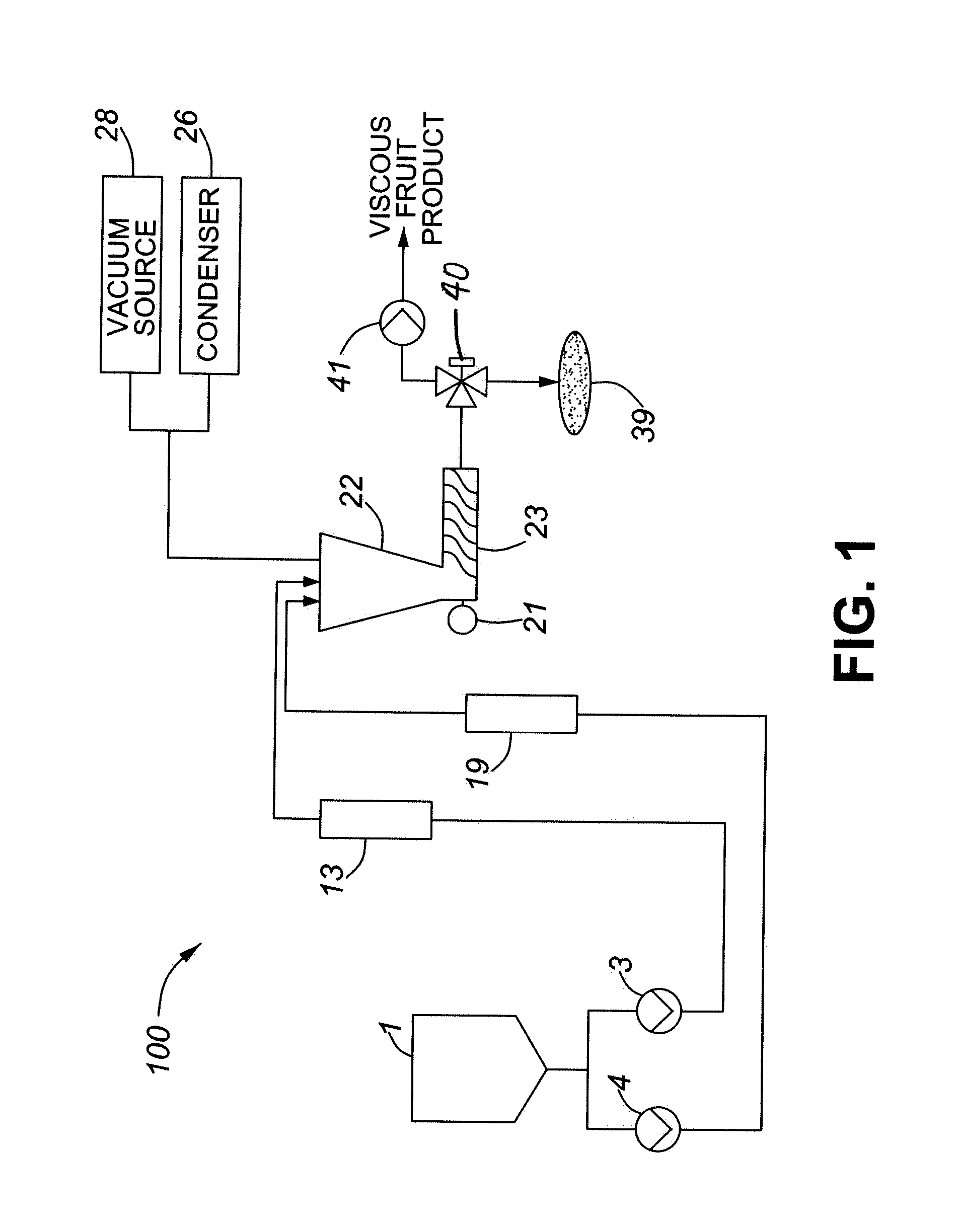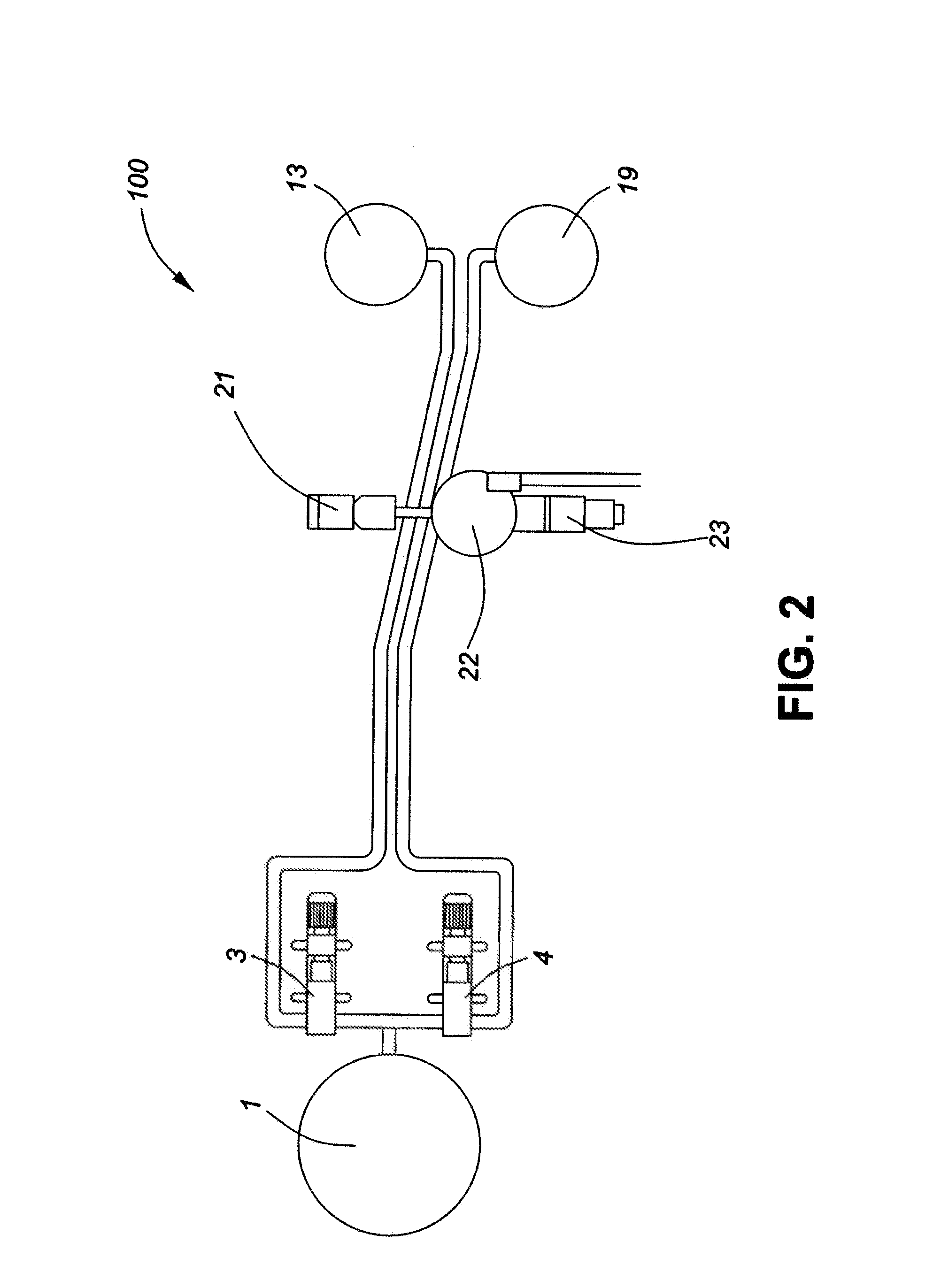Method and System for Producing Viscous Fruit Product
a technology of viscous and intermediate fruit, applied in the field of viscous intermediate fruit products, can solve the problems of increasing the viscosity of the slurry, affecting the flavour, colour, texture, shape of the resulting end product, and affecting so as to achieve constant quality and influence the quality of the produ
- Summary
- Abstract
- Description
- Claims
- Application Information
AI Technical Summary
Benefits of technology
Problems solved by technology
Method used
Image
Examples
first embodiment
[0033]Referring generally to FIGS. 1-4, and a system 100 (“kitchen”) is provided for manufacturing an intermediate fruit product from a precursor fruit product. The precursor fruit product is a fruit mass in a slurry form (hereinafter referred to as “slurry”), and the intermediate fruit product is viscous and has other physical properties suitable for mechanical forming into a consumable end fruit product. One exemplary type of a consumable end fruit product is a “leathery fruit mass” or “fruit leather”, which is slurry that has been dried to remove some of the slurry's moisture.
[0034]The slurry can be made of a variety of ingredients, and its composition will vary depending on the desired properties of the end product. The slurry can have between about 50% to about 100% fruit material; alternatively about 60% to about 100% fruit material; alternatively about 70% to about 100% fruit material; alternatively about 80% to about 100% fruit material; alternatively about 90% to about 100...
second embodiment
[0051]Alternatively, and instead of using the auger 23, a pump (not shown), such as a positive displacement pump, can be used to pump the slurry from the vacuum chamber 22. As the inlet of this pump is considerably smaller than the auger 23 surface area inside the vacuum chamber, it is not able to extract slurry from the vacuum chamber 22 at the same volume as the auger 23, and the vacuum chamber 22 is consequently operated at a lower vacuum pressure when used in conjunction with the pump as opposed to the auger 23. Operating the chamber 22 at a lower pressure allows the product to free fall into the pump inlet. As opposed to the −0.55 Bar vacuum that is possible when the auger 23 is used, a vacuum no larger than −0.3 Bar (an absolute pressure of about 72000 Pa within the vacuum chamber), for example, should be used if the pump is used to extract slurry from the vacuum chamber 22. The residence time of the slurry within the vacuum chamber 22 in this alternative embodiment is about ...
PUM
 Login to View More
Login to View More Abstract
Description
Claims
Application Information
 Login to View More
Login to View More - R&D
- Intellectual Property
- Life Sciences
- Materials
- Tech Scout
- Unparalleled Data Quality
- Higher Quality Content
- 60% Fewer Hallucinations
Browse by: Latest US Patents, China's latest patents, Technical Efficacy Thesaurus, Application Domain, Technology Topic, Popular Technical Reports.
© 2025 PatSnap. All rights reserved.Legal|Privacy policy|Modern Slavery Act Transparency Statement|Sitemap|About US| Contact US: help@patsnap.com



